
The Boboli Gardens (Giardino di Boboli) is a historical park in Florence, which is the most famous and beautiful in the city, as well as one of the most important examples of an Italian garden in the world and a real open-air museum.
The Boboli Gardens are spread out on the left (southern) side of the Arno River, on the slopes of the Boboli hill of the same name on the southeastern side of the Palazzo Pitti, which was the main residence of the Grand Dukes of Tuscany Medici.
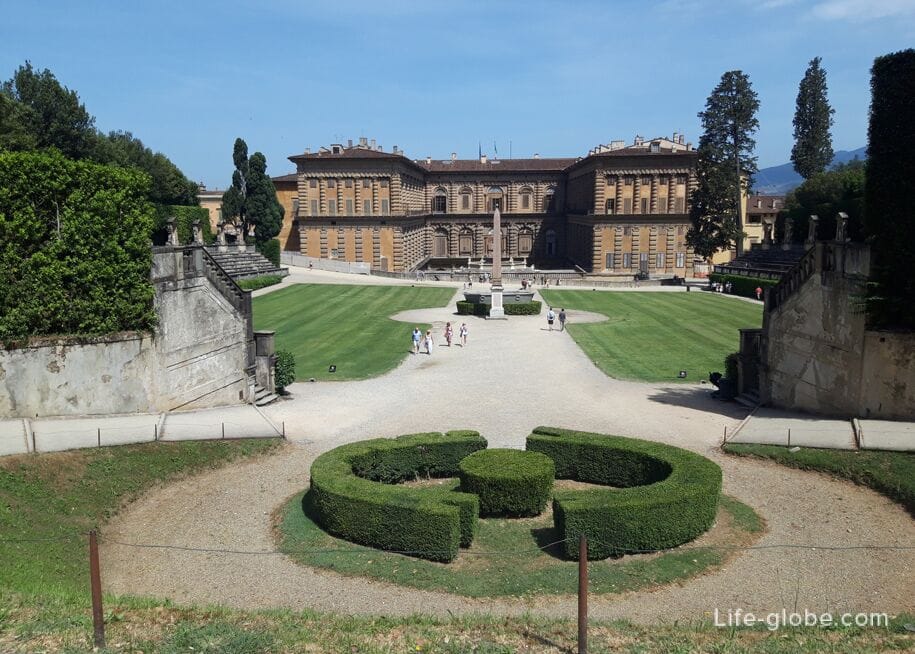
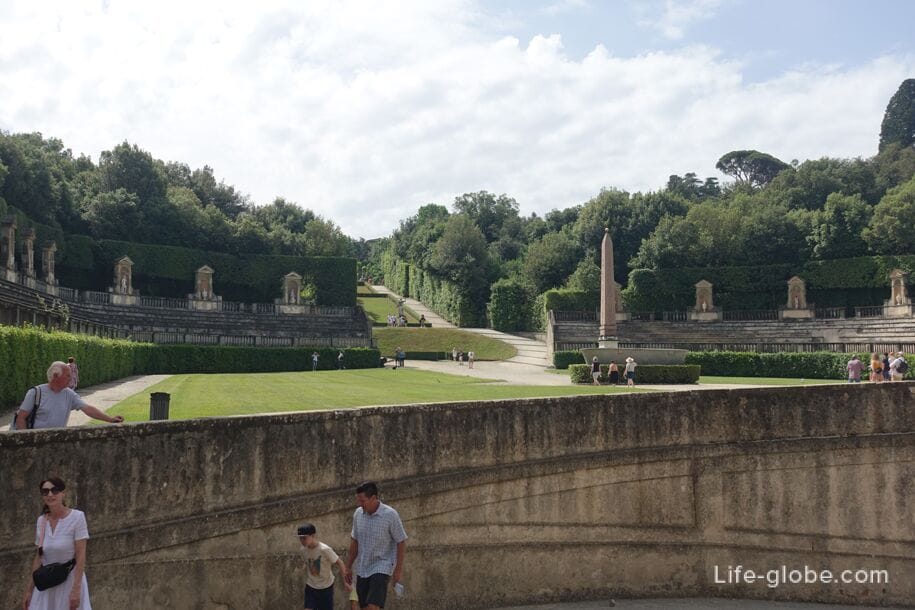
The gardens were created between the 16th and 19th centuries. They were originally created as the garden of the Medici Palace under Cosimo I de' Medici; then the Habsburg-Lorraine House owned the garden and the palace during the Grand Duchy of Tuscany (since 1737), and after that the Savoy Dynasty (since 1860). Before the transfer of land ownership to the Medici family (1549) they belonged to the Pitti family (who began the construction of the palace, which was named Pitti in honor of the family), and even earlier to the Borgolo or Borgoli family (Borgolo, Borgoli), from which the gardens probably got the name "Boboli".
During the history of the garden was expanded, supplemented and landscaped. The garden underwent the most important expansion during the reign of Cosimo II de' Medici (1609-1621).
Niccolo Tribolo, Bartolomeo Ammanati, Giorgio Vasari, Bernardo Buontalenti, Giulio and his son Alfonso Parigi worked on the gardens.
Boboli Gardens were first opened to the public during the reign of Peter Leopold of Lorraine. In June 2013, the garden became a UNESCO World Heritage Site.
Today Boboli Gardens is a public park in Florence, which, thanks to its architectural and landscape design and a large collection of sculptures ranging from antique to Renaissance and 20th century, is one of the most famous gardens in Italy.
The gardens have a green area, divided in a regular way, with an area of about 45,000 m2, on which there is an amphitheater, an obelisk, statues, fountains, decorated grottoes and pavilions, also in the gardens there are alleys and paths for walking, there are flower beds, and from the open terraces of the garden there are beautiful views of the city of Florence.
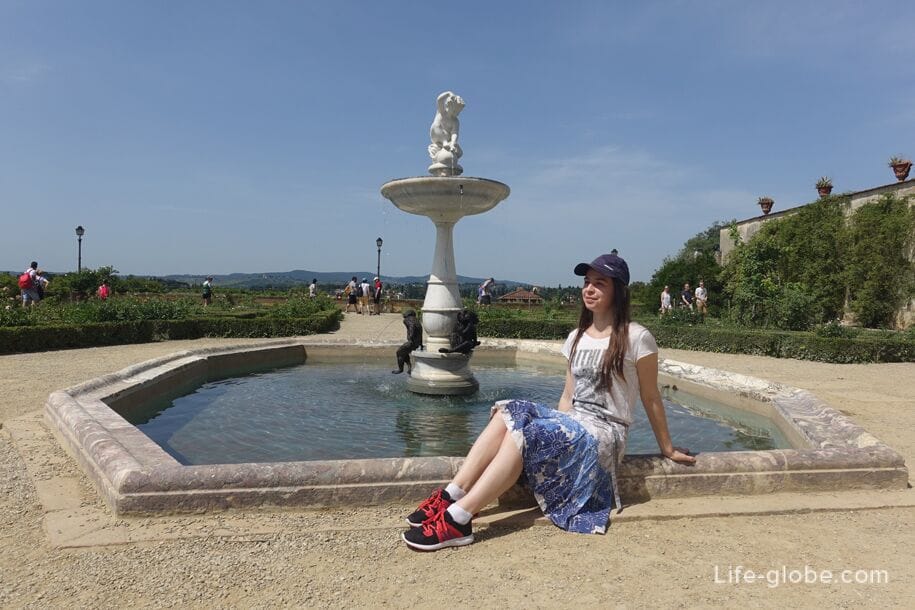

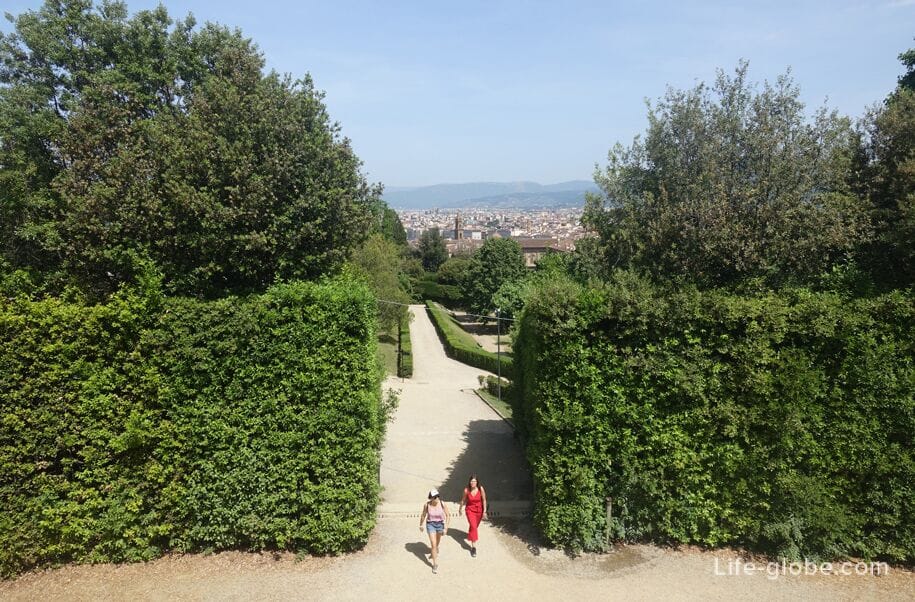
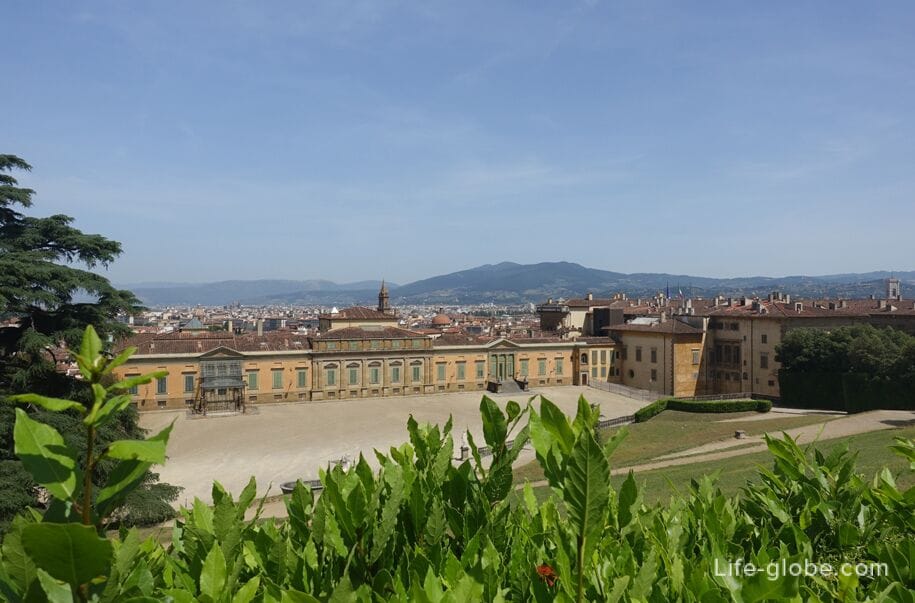
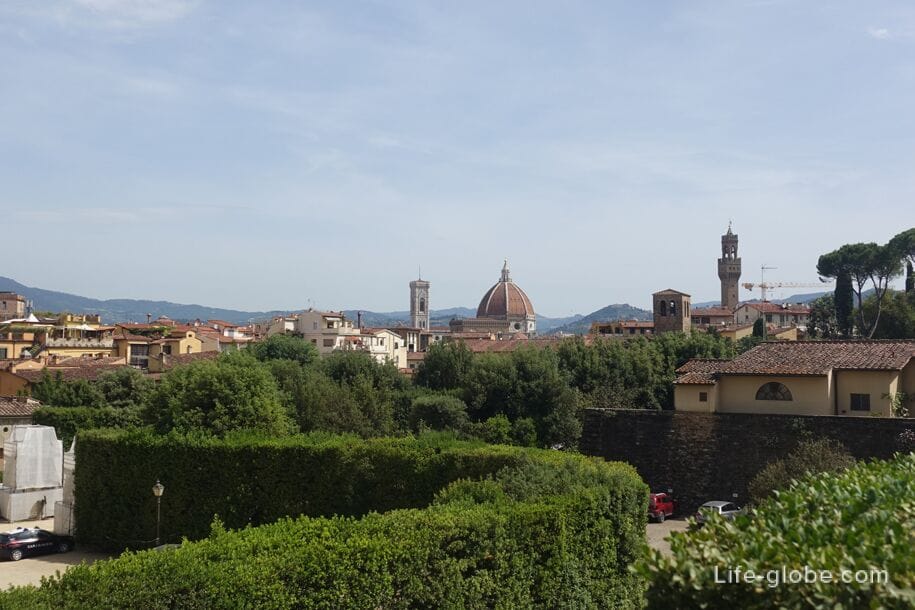
In the Boboli gardens there are toilets and fountains with drinking water, which have some decorations.
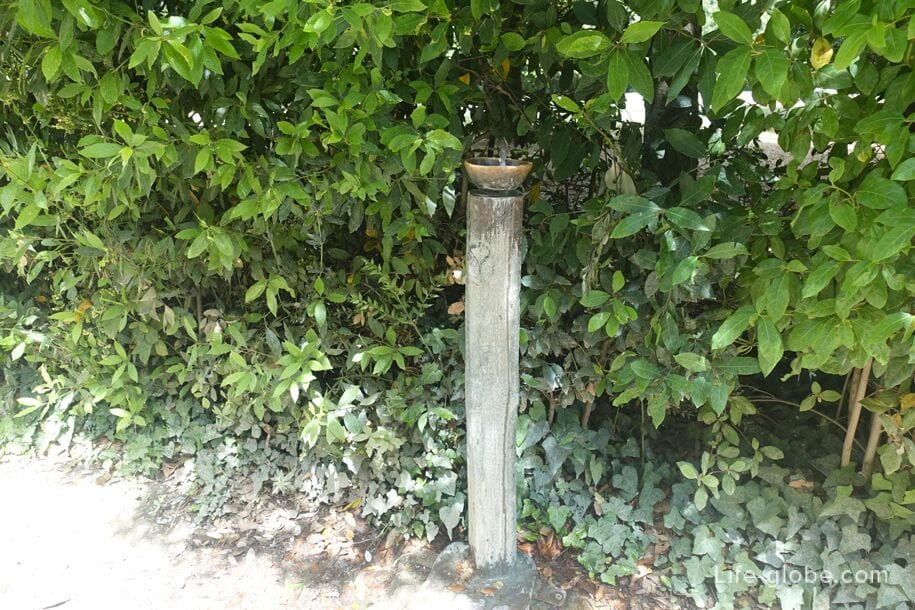
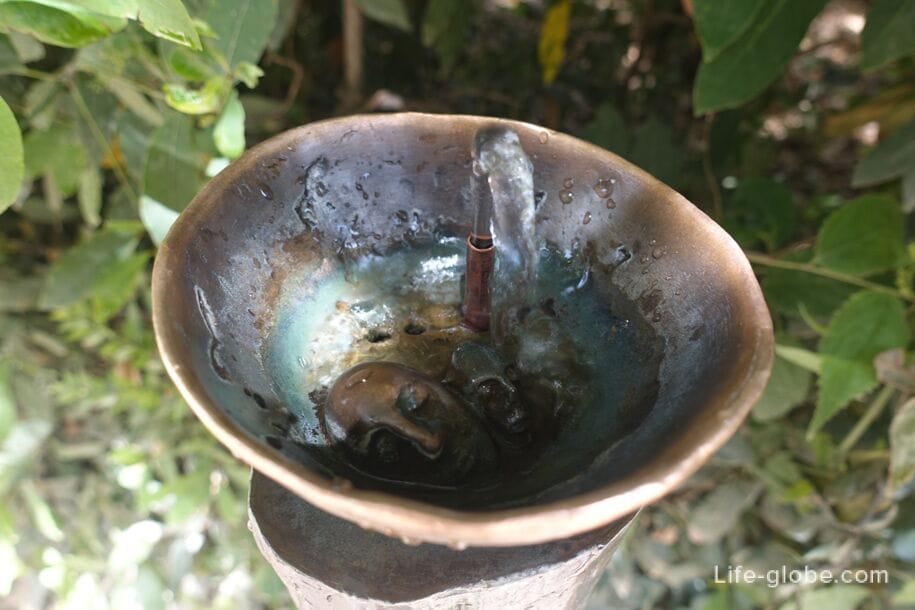
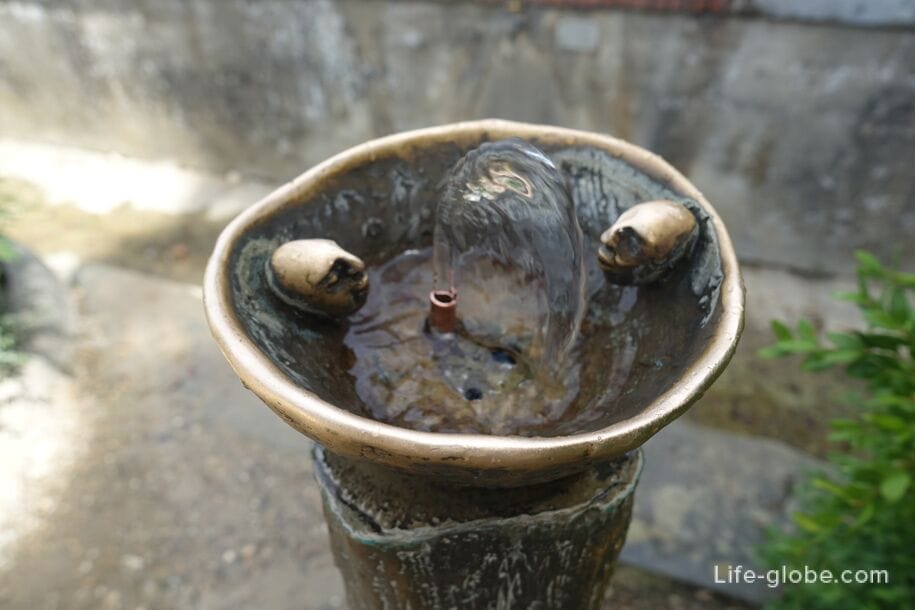
There are several entrances to the Boboli Gardens, the main one passing through the courtyard of the Ammannati Pitti Palace (entrance from Pitti Square).
The gardens overlook the wings of the palace and the terrace, with a magnificent fountain "Artichoke" (Fontana del Carciofo). Thus, the fountain dominates this view and decorates the intermediate point between the palace and the garden. The fountain is located exactly above the cave of Moses (the cave is clearly visible from the courtyard of the palace).
The Artichoke Fountain was created by Francesco Susini and Francesco del Tadda in 1639 and installed in 1641, when it replaced another fountain called Juno by Bartolomeo Ammannati, some fragments of which are now kept in the Museo Nazionale del Bargello in Florence.


Behind the terrace with a fountain there is a horseshoe-shaped amphitheater that begins the main axis of the Boboli Gardens.
The amphitheater marks the place where Boboli Hill was once excavated to extract the durable stone used to build the Pitti Palace.
The amphitheater is decorated with statues. In the center there is a high Egyptian obelisk, installed in 1790 and dating back to 1500 BC. The obelisk originates from Heliopolis in Egypt and was brought to Rome in the time of Domitian. Before, in the center of the amphitheater of the gardens was the fountain "Ocean", which in the 17th century was moved to the south-western part of the garden (in the Isolotto) so that the amphitheater could be used for theatrical performances, according to the fashion trends of that time.
The obelisk is connected to a large granite basin-bath, sculpted from a single block and possibly imported from the Alessandrine Baths in Rome.
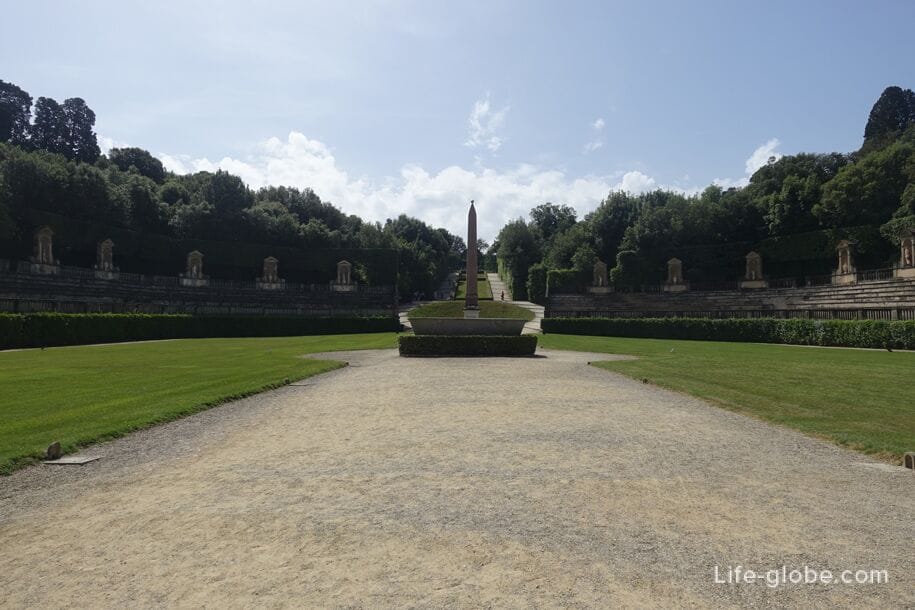
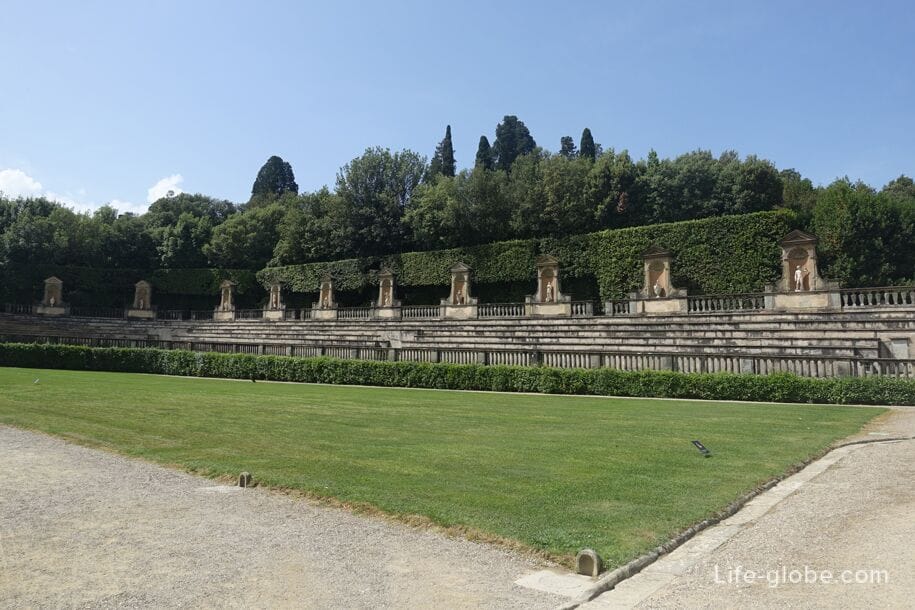
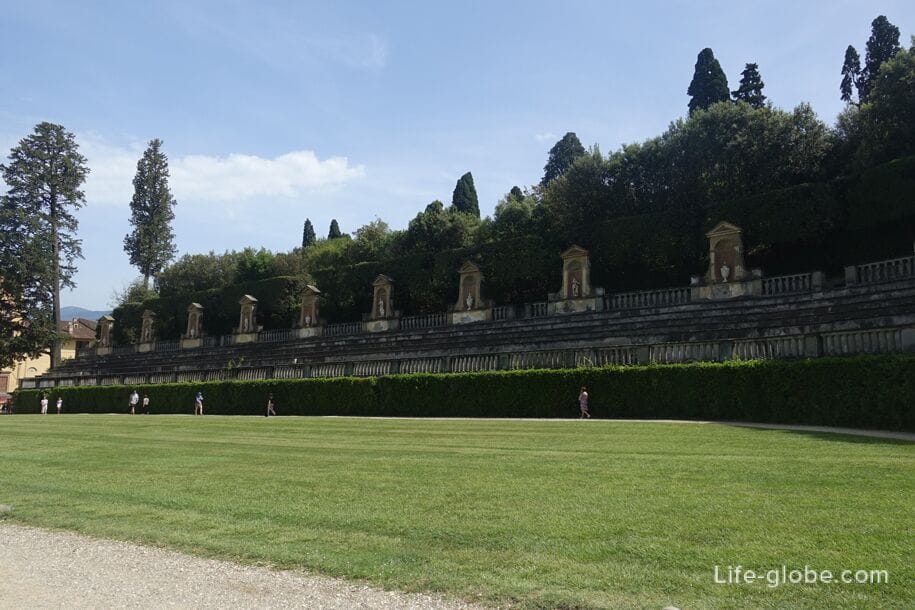
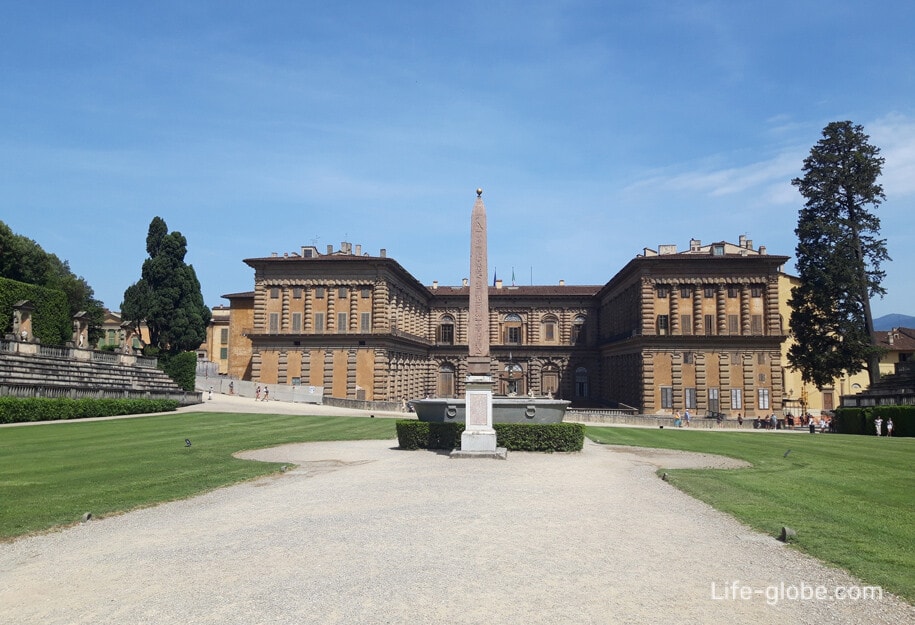
Behind the amphitheater, a ramp leads along the slope of Boboli Hill, decorated with sculptures and having a green area in the center.
In the center of the ramp, the sculpture of Demeter on the Roman base stands out. Demeter is a Roman copy of the original Greek, probably Alcamenes, a disciple of Phidias. To the left of Demeter is a statue of the Roman emperor Septimius Severus, and to the right is a Roman magistrate.
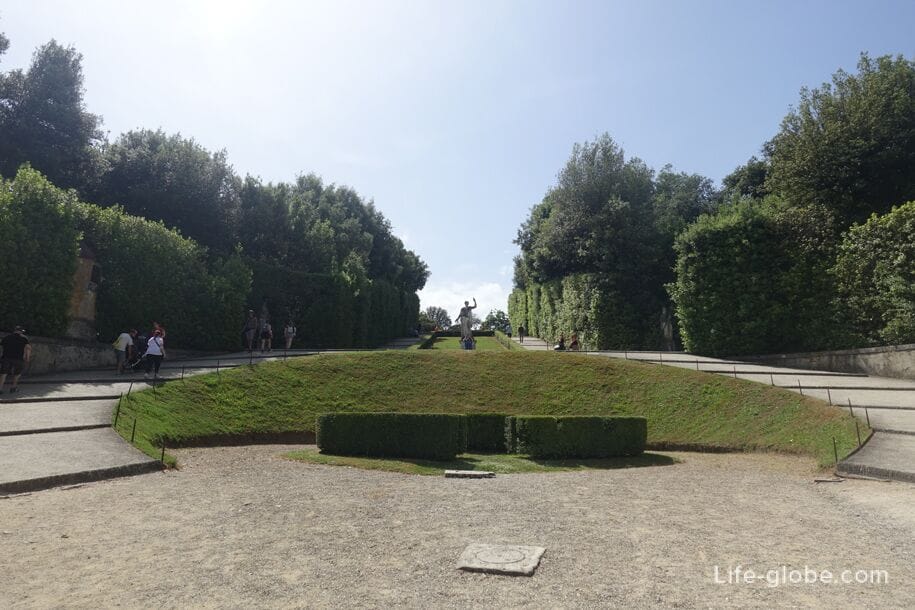
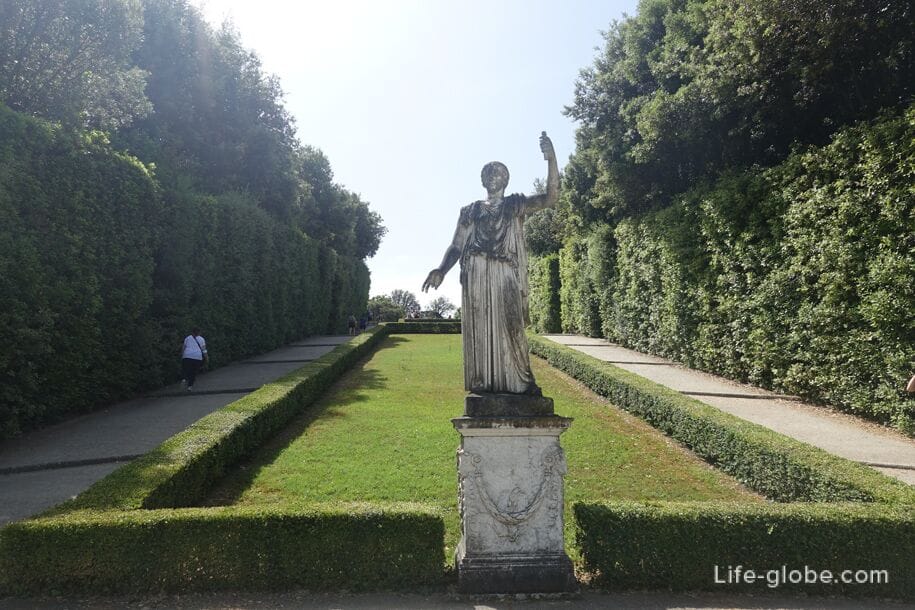
From the top of the ramp there are wonderful views of the hillside, the obelisk with an amphitheater and the Pitti Palace.


Climbing higher, you can see the magnificent fountain of Neptune or the pool of Neptune (Bacino di Nettuno), which was created in 1777-1778 on the site of the nursery.
In the center of the pool there is a large statue of the god of the seas Neptune with a trident in his hands. Neptune menacingly emerges from a rocky spur decorated with sculptures of newts. The statue of Neptune was created by Stoldo Lorenzi in 1571.
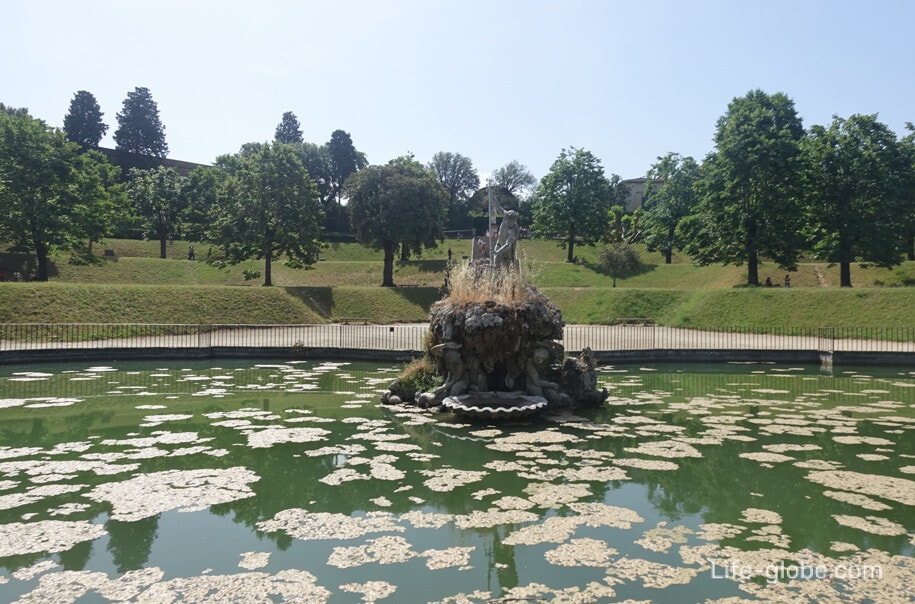
Above the Fountain of Neptune is a statue of Abundance by Pietro Tacca (1636), already begun by Giambologna in 1608.
The female figure of Abundance is made of white marble with a sheaf of wheat from gilded bronze in her hand. The figure has the features of Giovanni of Austria, the wife of Francesco I de' Medici, and was commissioned as a shrine to the Grand Duchess, who died in the palace in 1578 at the age of thirty-two. Initially, the statue was intended for a festive column in Piazza San Marco in Florence, which was never built.
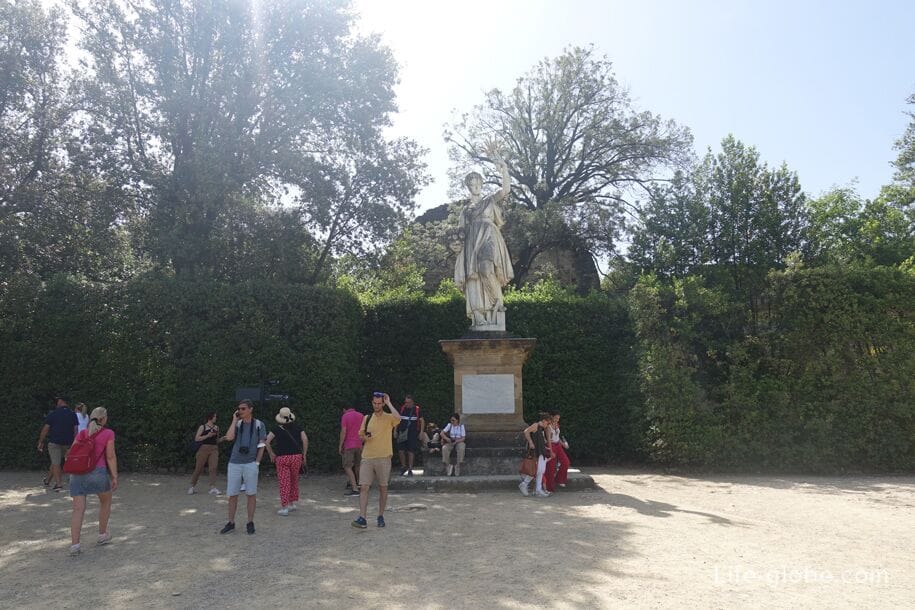
The terrace area near the Statue of Plenty offers views of the gardens, the palace and part of Florence.
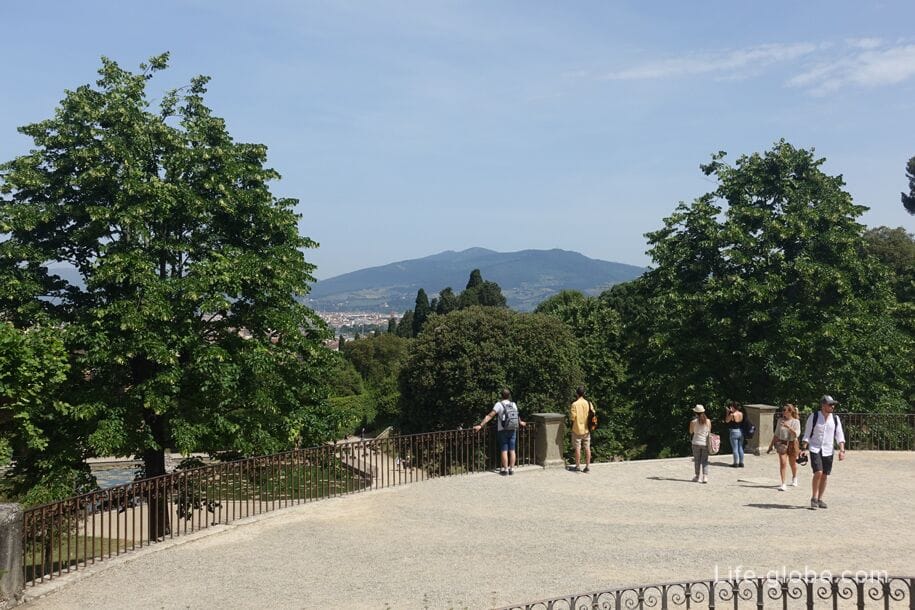
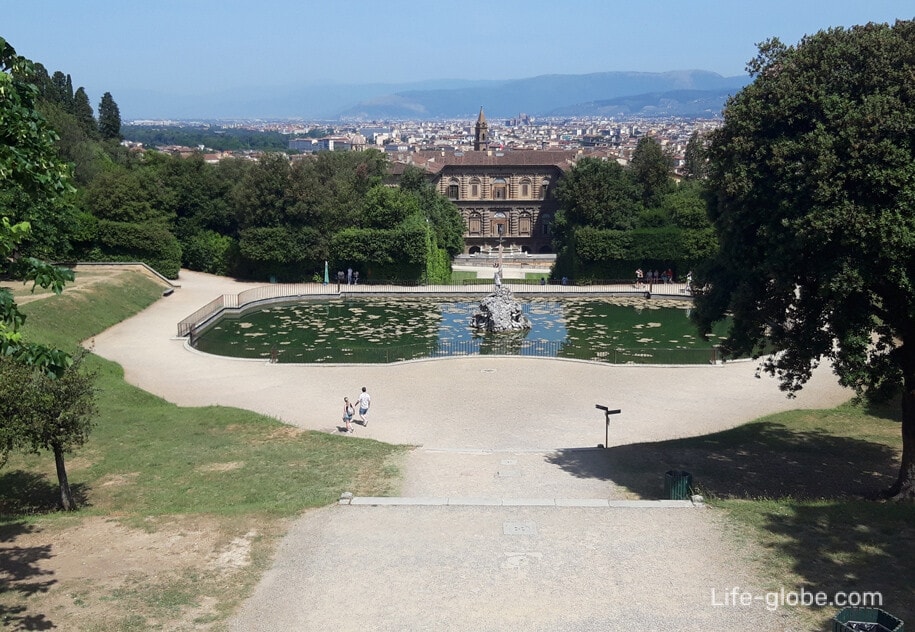
In this part of the Boboli Gardens there are defensive walls that extend from the nearby Fort Belvedere (Forte di Belvedere), and are softened by an abundance of greenery.
A spiral staircase with a viewing terrace leads to the fenced Knights' Garden (Giardino del Cavaliere), which is located above the Bastion of the Knights (Bastion del Cavaliere, Il Bastione del Cavaliere), which was also part of the fortifications built by Michelangelo in 1529 before the siege of the city.
The staircase with a terrace leading to the Knight's Garden was designed by Zanobi del Rosso between 1790 and 1793. The staircase is decorated with two statues: one depicting Flora, and the other a young Jupiter, by Giovanni Battista Caccini. There are views from the staircase terrace.

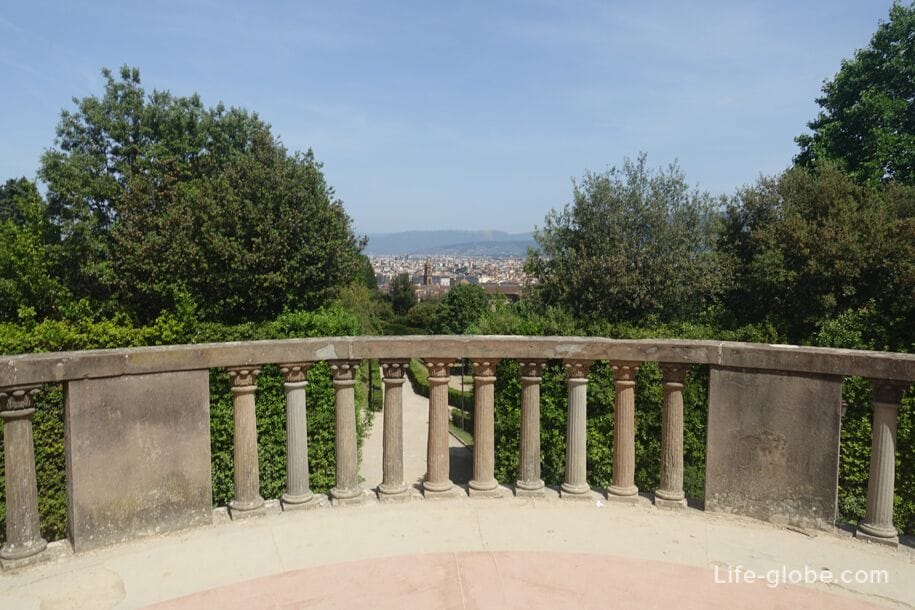
The Knights' Garden is decorated with stunted plants (boxwood) that create geometric shapes and contain rare and fragrant species of dahlias and roses that bloom from May to June.
In the center of the garden there is a fountain of monkeys, so called because at its base there are three bronze monkeys, the work of Giambologna. In the center of the upper part of the fountain, water gushes from a marble putti (putto in Italian) attributed to Pierino da Vinci or Tribolo.
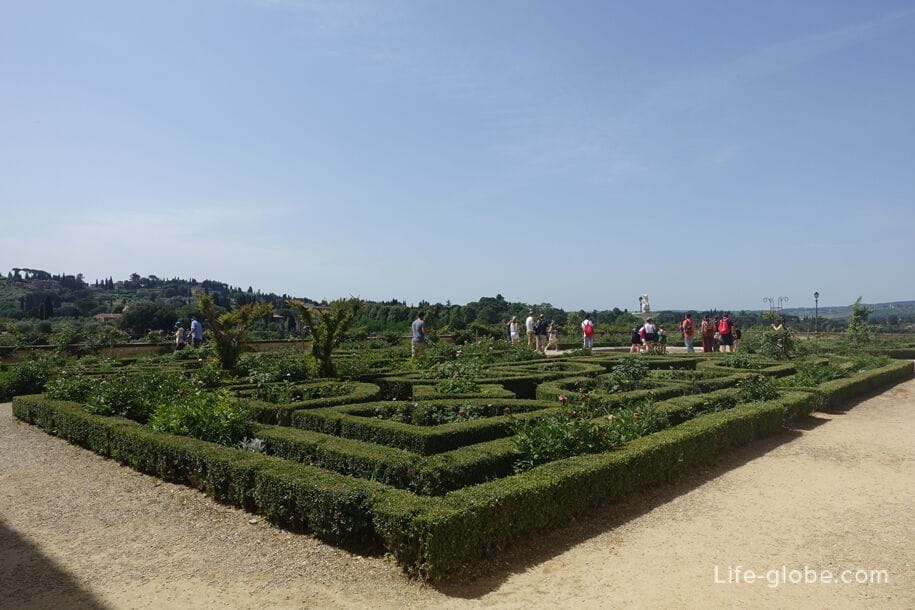
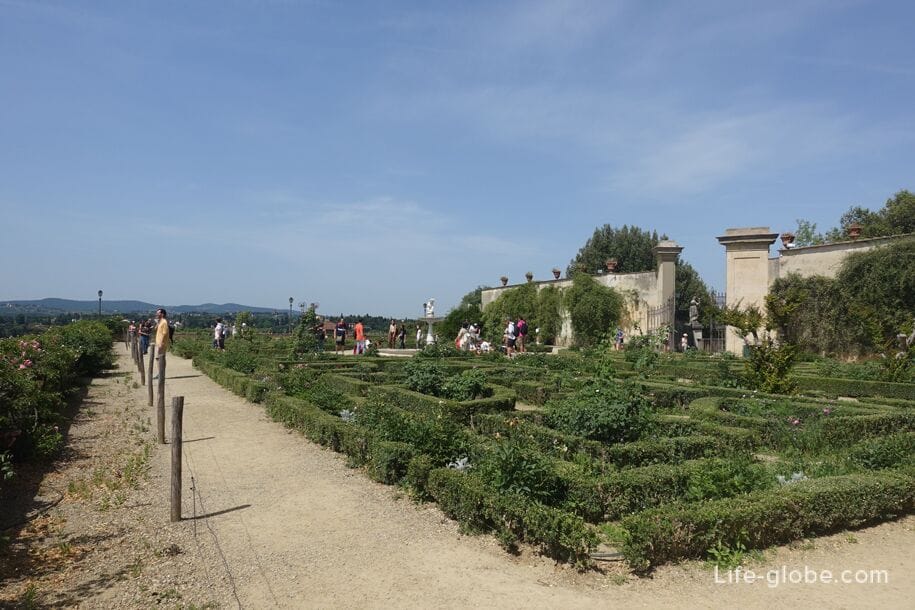
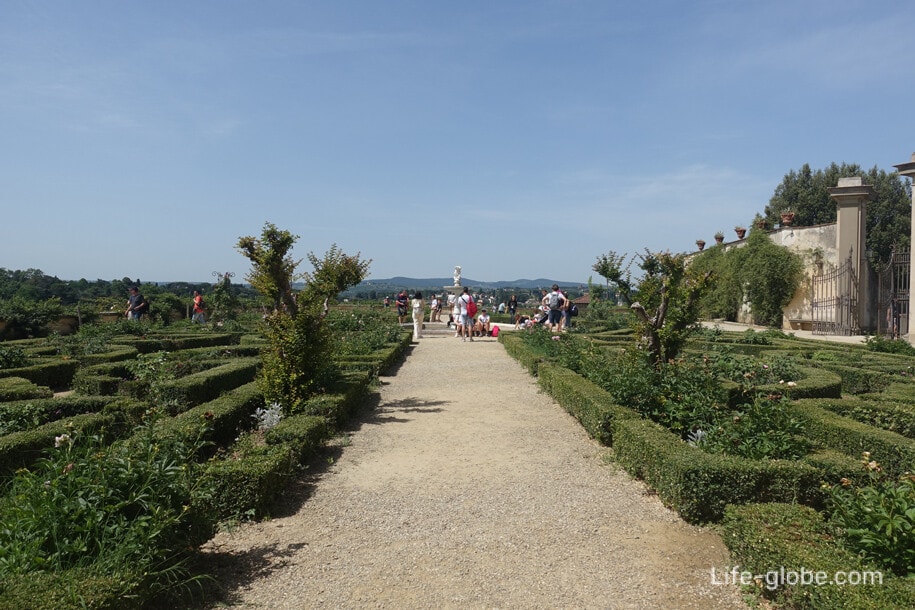
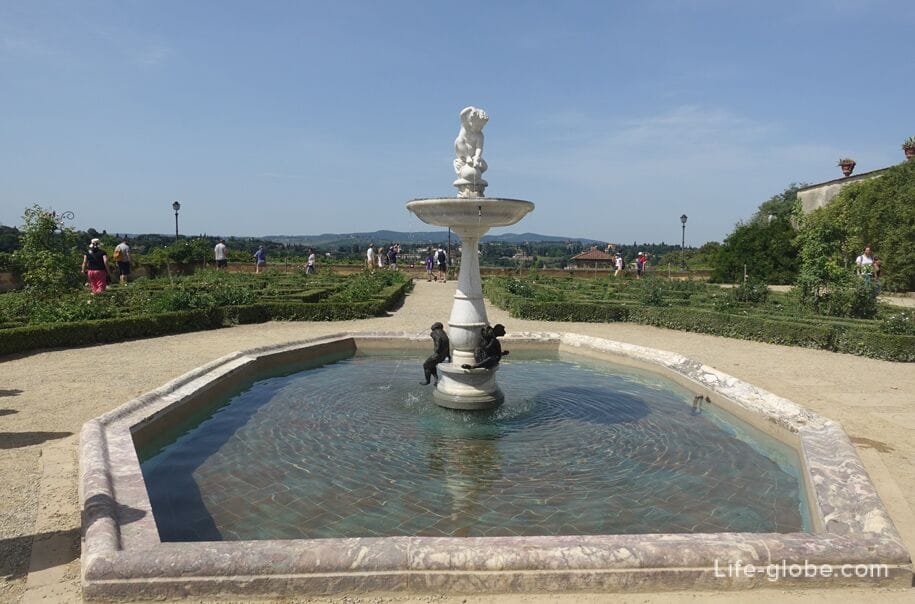
Also in the Knight's gardens is the Palazzina del Cavaliere, a building built around 1700 by order of Cosimo III de' Medici for his second son Giangastone.
The neoclassical current appearance of the building is distinguished by pilasters with ionic capitals topped by a projecting cornice running the entire length of the building and decorated in the upper part with terracotta vases alternating with four terracotta statues.
Today, the building houses a porcelain museum, which contains a collection of Meissen, Ginori and Sevre products from the collections of Lorraine.
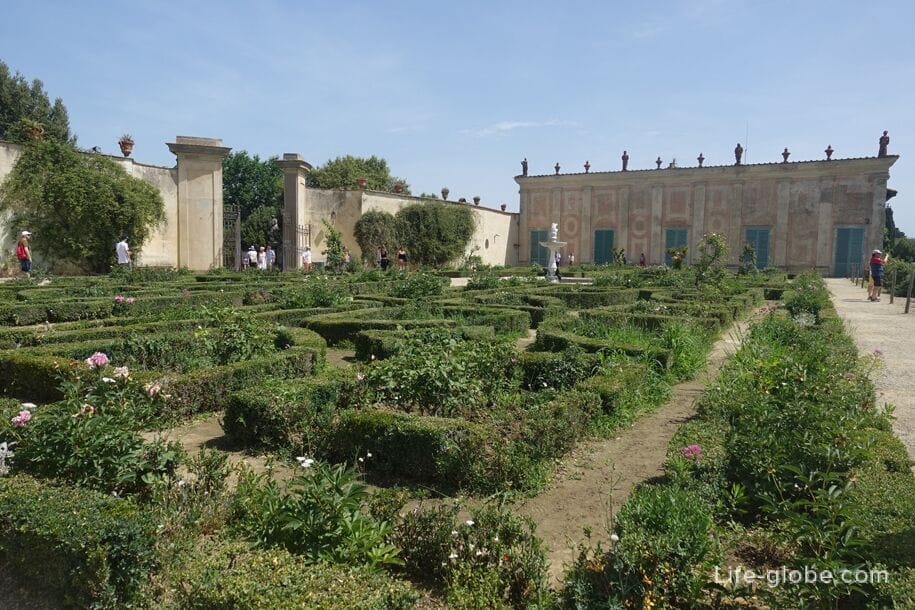
The privileged position of the Knight's Garden, which rises above the Boboli hill, offers a wonderful panoramic view of the remains of the castle on the Torre del Gallo hill with agricultural land partially planted with olive trees.
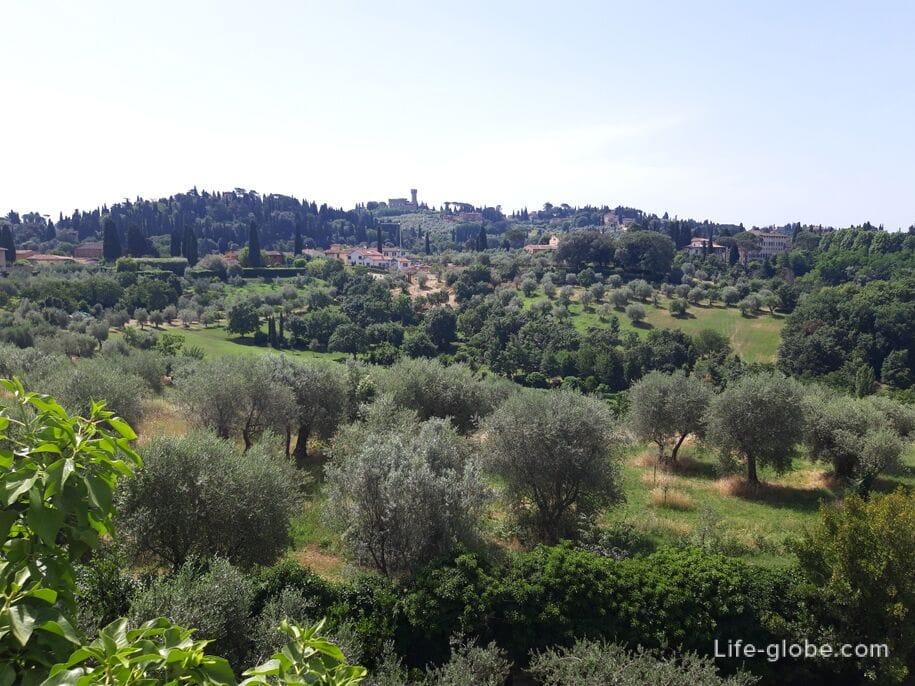
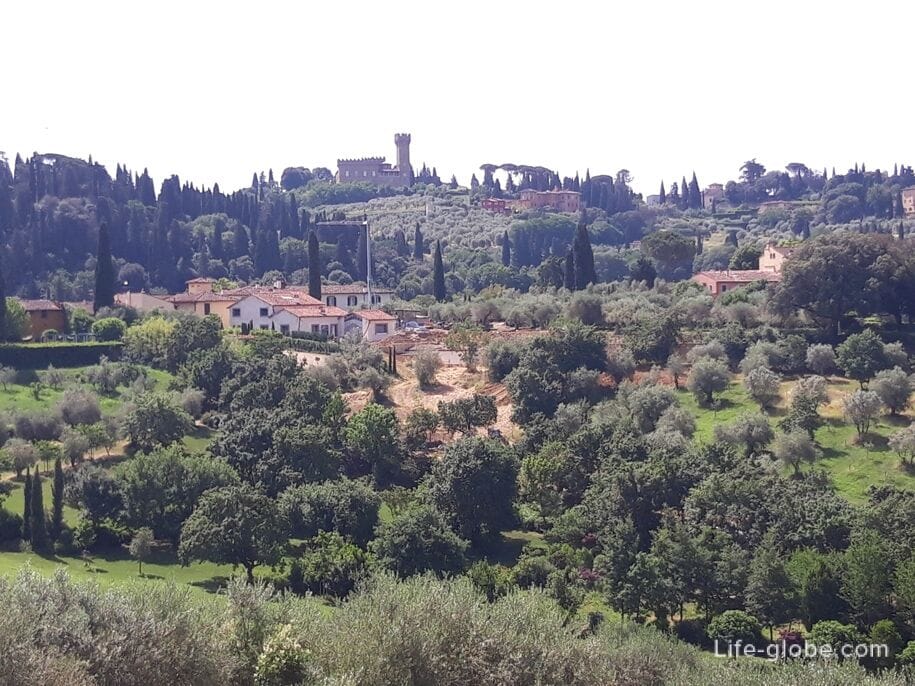
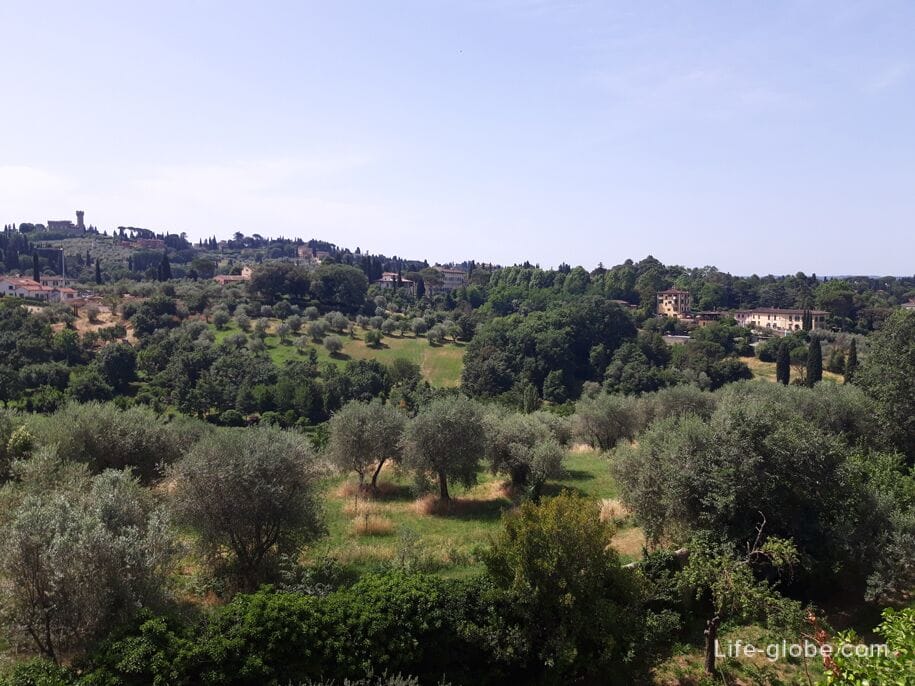
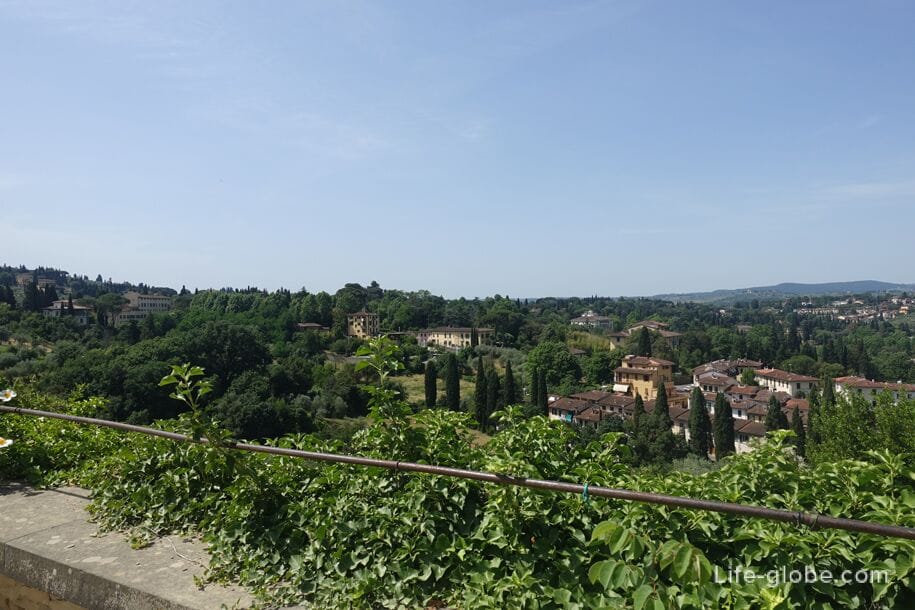

To the right of the main axis of the Bobolli Gardens is the largest part of the park, which has quite dense vegetation.
In this part of the gardens are notable: Viottolone, literally translated as "giant alley"; a magnificent wide alley with cypresses and statues (Viale dei Cipressi). There are also transverse alleys and zigzag paths, some of which are covered with tunnels of trees interspersed with evergreen shrubs.




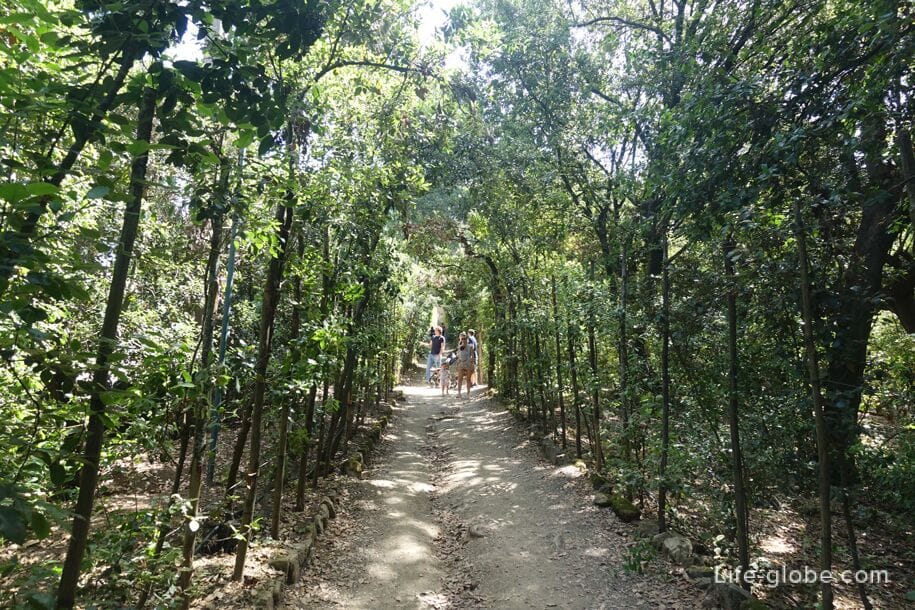
There is also a large lawn, in the center of which there is a broken column, and on the right side there is one of the few modern works in the Boboli gardens: the monumental bronze head "Cracked Tindaro" (Tindaro screpolato) by Igor Mitorai (1998), which remained in the garden after the exhibition in 2002.
It offers a beautiful view of part of Florence.
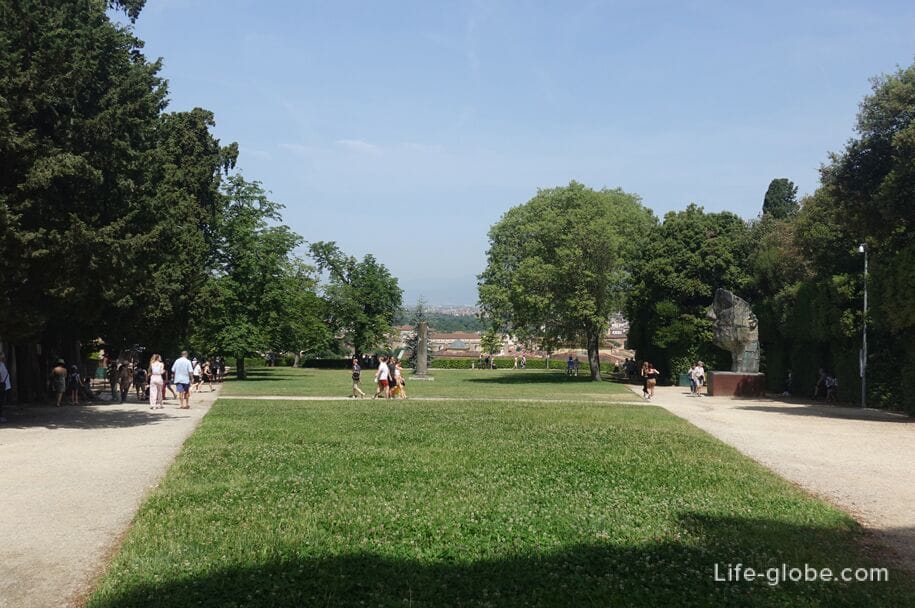

A cypress alley leads to a large fountain with an island pool - Isola (Isolotto, Vasca dell'Isola), designed by Italian architects Alfonso and Giulio Parigi in 1618.
The square is surrounded by hedges about 12 meters high, which form the background for numerous stone and marble statues depicting various subjects: mythological, historical, rural, commoners.
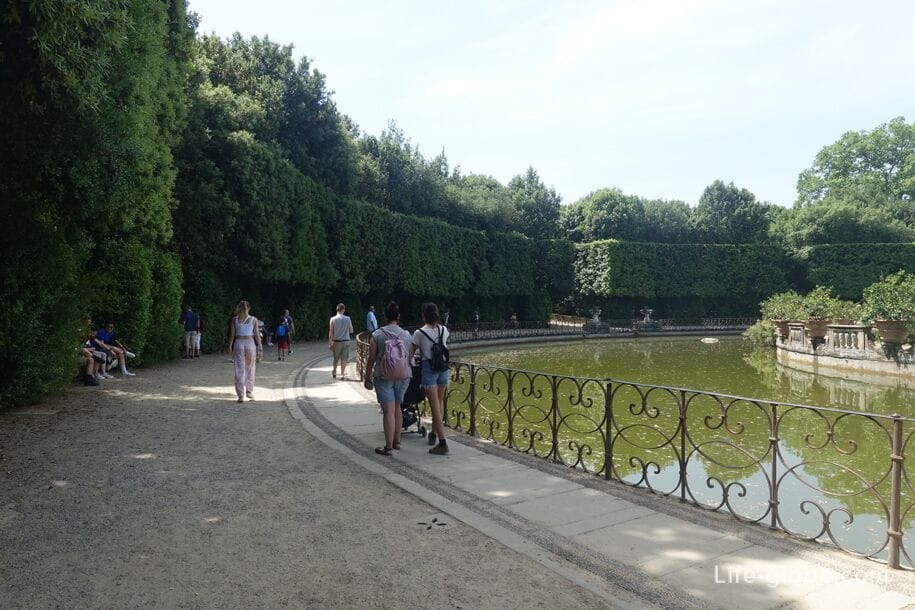


In the center of the square there is a large circular pool with an island in the center connected to the square by two paths ending with a large gate.
The large gates of the aisles are supported by columns on which there are statues of Capricorn, an animal, a symbol of the power of the Grand Duchy of Tuscany. On the sides of the columns there are small bizarre fountains in the form of male "harpies" pouring water into tanks in the form of shells, with grotesque ornaments in the form of sea creatures.

On the axis perpendicular to the Large Gate, there are four fountains at the level of the outer balustrade, two on each side: harpy fountains and putti fountains decorated with intertwined dolphins, sea animals, fantastic masks and statues in a circle.
Not far from these fountains, several small marble sculptures by the Giambologna school (1637) emerge from the pool water: Perseus on horseback, as if jumping out of the water; and Andromeda, chained to a rock by her ankles.
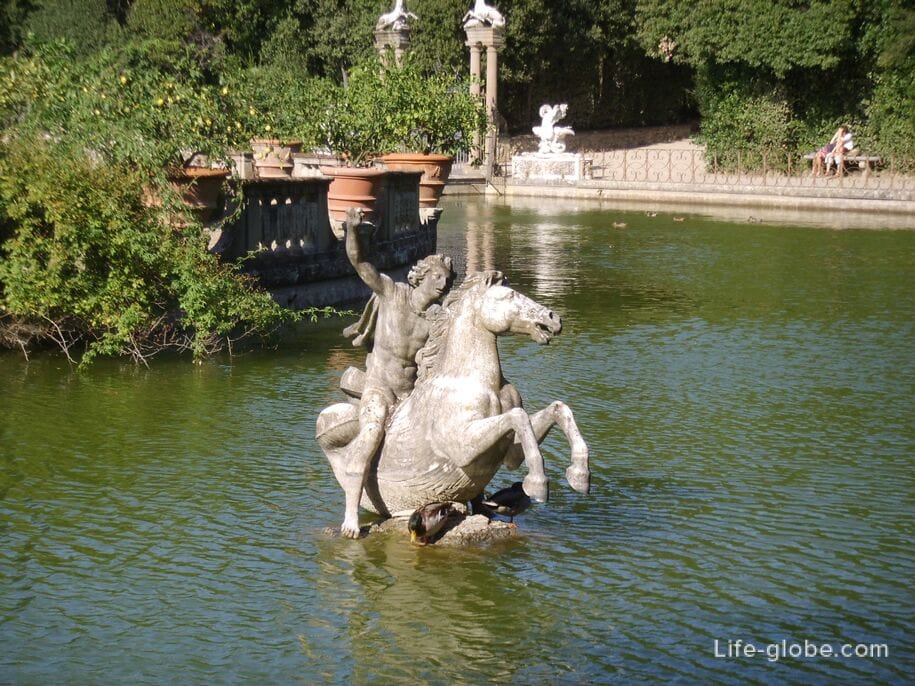

In the middle of the pool, a large island is surrounded by a stone fence, in the recesses of which there are terracotta vases with lemon trees.
The center of the island is decorated with the fountain "Ocean" by sculptor Giambologna, consisting of a base with bas-reliefs ("Abduction of Europa", "Triumph of Neptune" and "Diana's Bath"), which supports a round granite pool from the island of Elba, on which rises a sculptural group of Neptune surrounded by reclining river gods representing the Nile, Ganges and Euphrates which symbolically pour their waters into a large pool representing the Ocean.
It was this fountain that was once located in the center of the Boboli Gardens amphitheater.
The original Fountain "Ocean" is now in the Bargello Museum, and here (in the gardens) it has been replaced by a copy.

Not far from the island with the fountain "Ocean" there is a semicircular lawn space, which is called a Semicycle or Lawn of Columns (Hemicycle or Prato delle Colonne / Prato delle Colonne).
The lawn is surrounded by plane trees, statues (mostly 17th century busts), has tall columns, and also contains four ancient colossal busts: Jupiter Serapis, Jupiter, an obscure male deity and Claudius the Emperor. Also noteworthy is the Volcano statue by the Italian master Chiarissimo Fancelli.



Bust of Jupiter Serapis
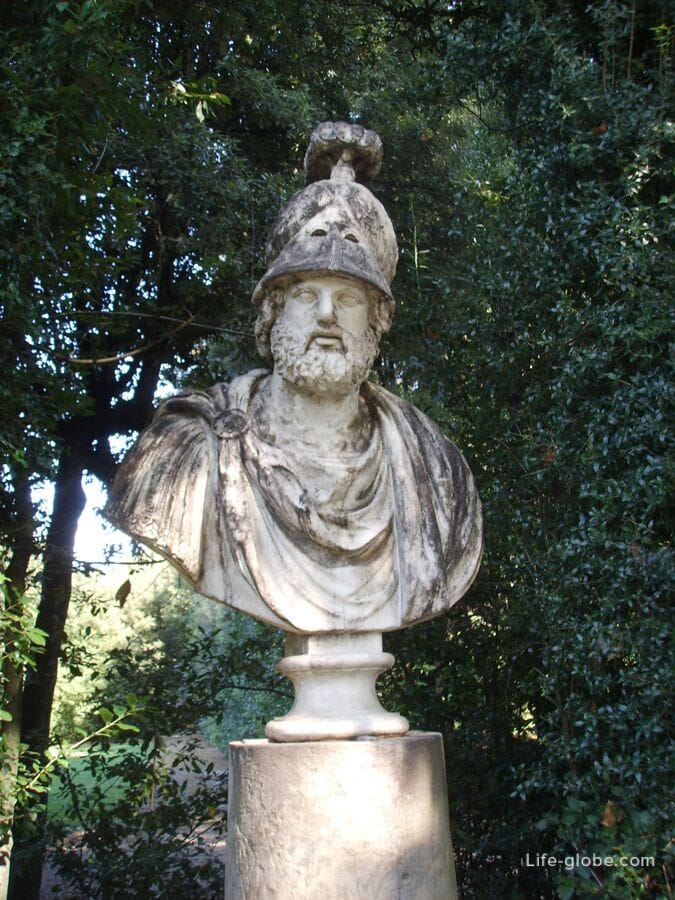
Volcano Statue
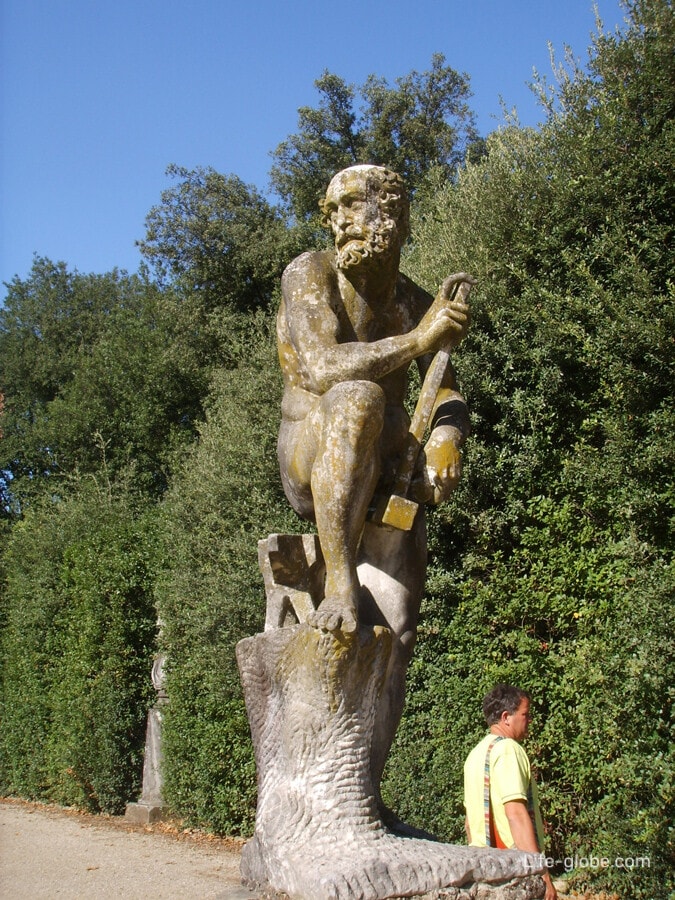
Paths and alleys run around and near the lawn of the Columns.



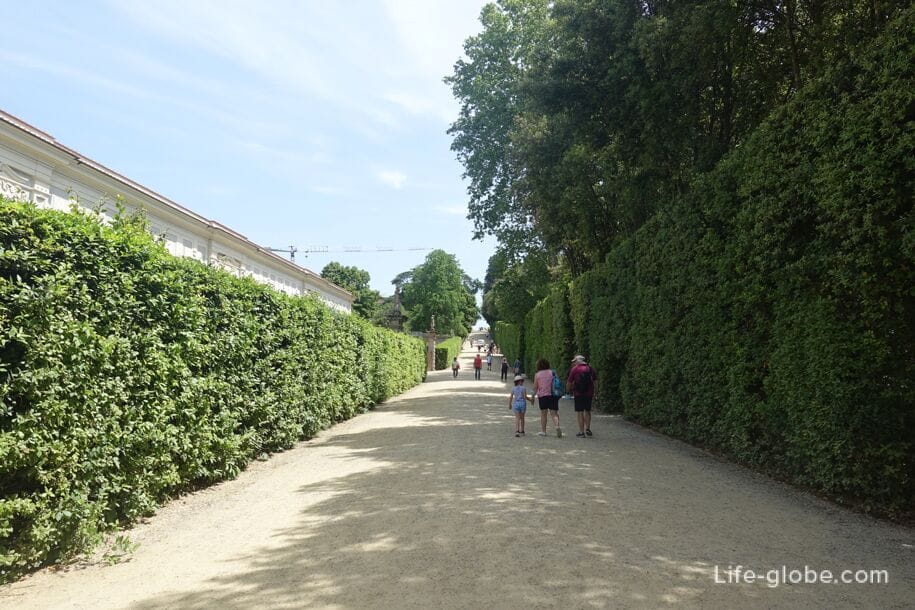
Near the lower alley of the Boboli Gardens, the Harvest Fountain (Fontana della Vendemmia) is notable.

Here, in the lower part of the gardens, there is a Lemon House (Limonaia, Limonaia).
The Medici were among the first to spread the fashion for citrus fruits in their gardens. Since citrus fruits usually do not grow in Tuscany due to too cold winters, therefore they were considered actually exotic plants that had to be sheltered indoors for the winter - special buildings called lemon houses. To make these movements possible, lemons were planted not in the ground, but in large terracotta pots, called conches, made by hand and themselves being valuable ornaments. Lemon houses had to have a mild but dry microclimate, so the floor was often earthen, not paved, for better moisture absorption.
The current Lemon House in Boboli Gardens was built around 1778 by Zanobi del Rosso, during the general reconstruction of the garden commissioned by Grand Duke Pietro Leopoldo. At this place, during the time of Cosimo III de' Medici, the Seraglio degli Animali was located, where animals for the kitchen and also exotic animals bought or received as a gift from foreign sovereigns (giraffes and hippos, stuffed which are now kept in the Specola Museum in Florence / Museo Storia Naturale - La Specola) were kept.
There is a small garden near the Lemon House.

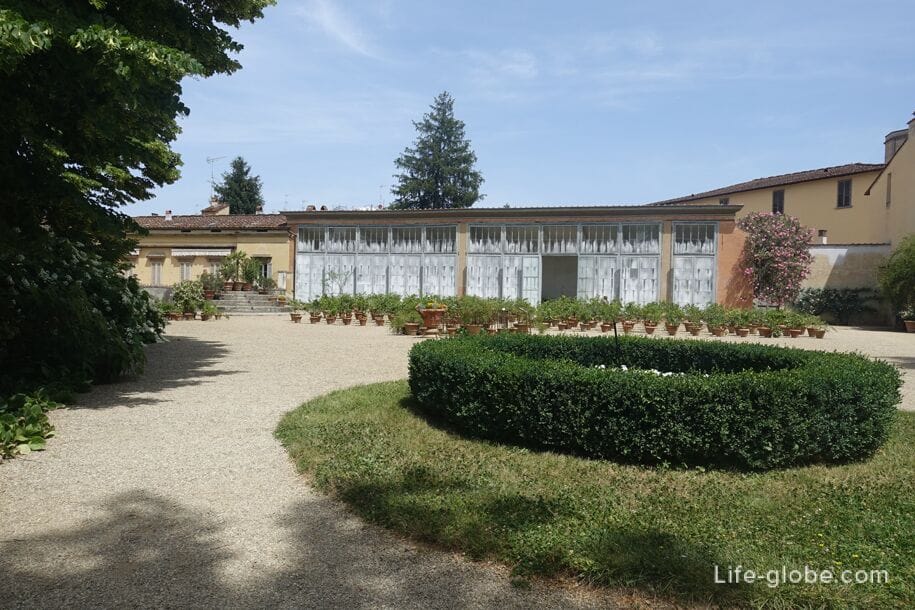

Behind the Lemon House, if you go down to one of the entrances / exits to the Boboli gardens, the grotto Adam and Eve (Grotta di Adamo ed Eva), built in 1817 by Giuseppe Caccalli in the form of a small exedra, preceded by two columns supporting the architrave, is noteworthy.
The grotto is decorated with spongy nodules and mosaic of polychrome pebbles, and the name comes from the sculpture group "Adam and Eve", placed in the grotto, by Michelangelo Nakcherino around 1616.

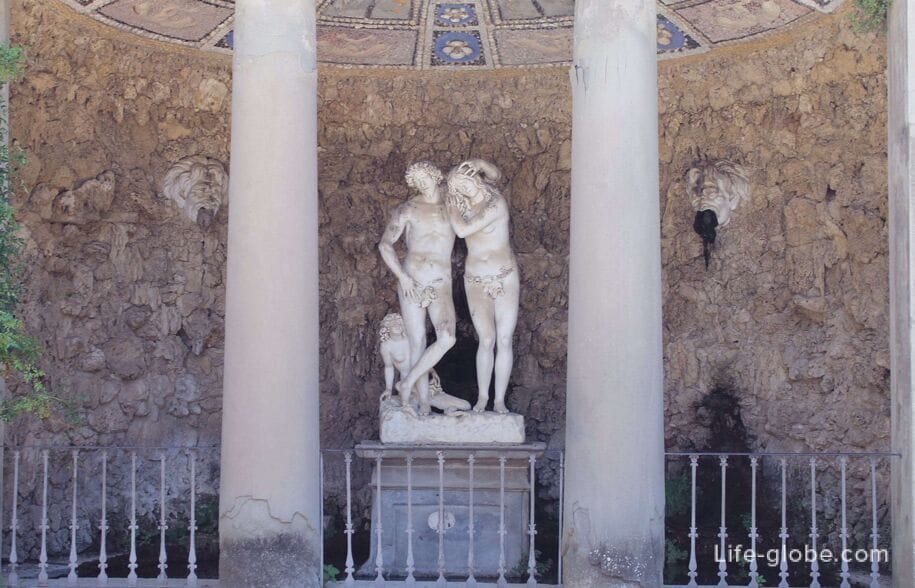
Further in the Boboli gardens, an impressive neoclassical building - the Palazzina della Meridiana (Palazzina della Meridiana), erected in the 1778-1830s, first by the Italian architect Gaspare Maria Paoletti under Grand Duke Pietro Leopoldo and then by architect Pasquale Poccianti, attracts attention.
The building got the name "Meridian" from the sundial that crossed it inside.
The building is accessed from the Pitti Palace. Frescoes with "Episodes of the Betrothed" by the nineteenth-century artist Nicola Cianfanelli have been preserved in the building.
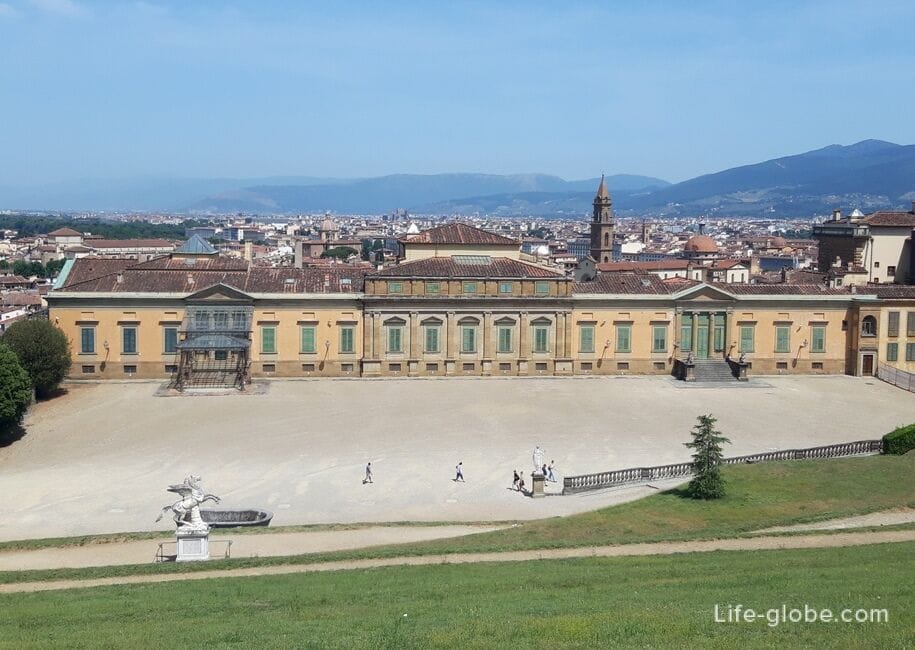

In front of the Meridian building stretches Prato di Pegaso (Prato del Pegaso) - a hilly slope, which owes its name to the marble sculpture of Pegasus by the Italian sculptor Aristodemo Costoli in 1865, which was used as a symbol of the Tuscany region.
There are also other statues on the slope, and a large gray granite pool. Thanks to the large trees that stand isolated and asymmetrically, the hill resembles the landscape of English gardens.
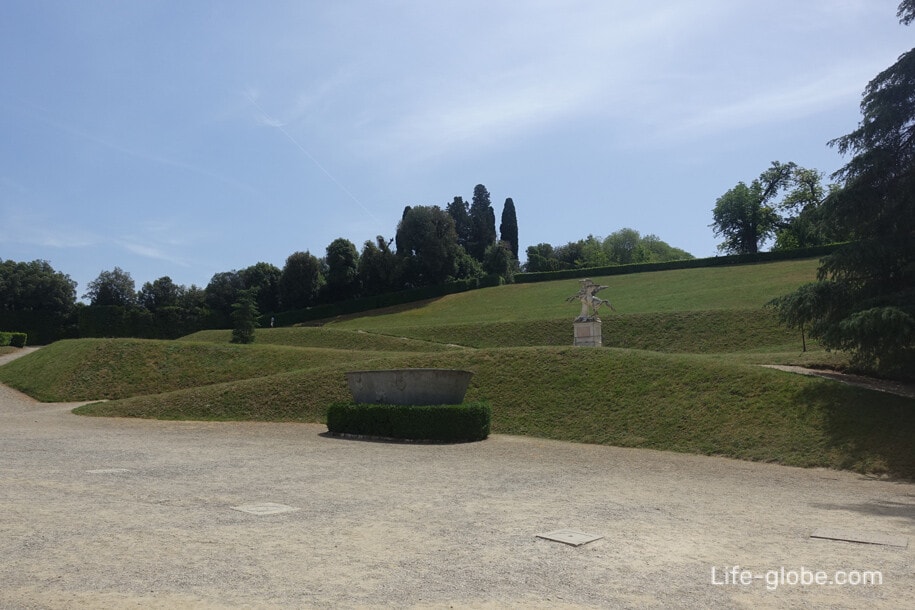
Moving on, we again cross the central axis of the park (amphitheater) and exit to the left (northeast) side of the Boboli Gardens.
Here is the Garden of Jupiter (Orto di Giove), named after the sculpture of a sitting Jupiter by the Italian sculptor Baccio Bandinelli in 1556 located in it.
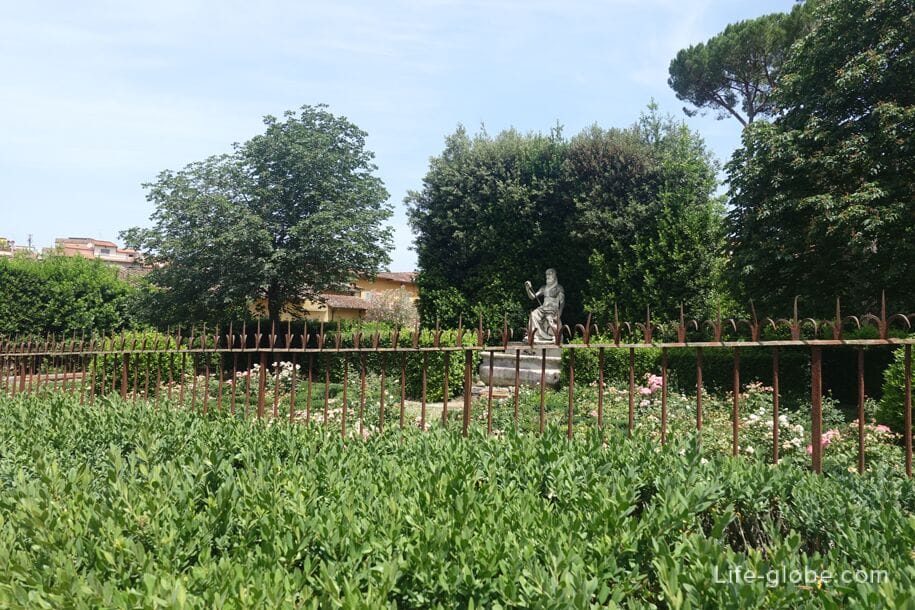
Next to the garden of Jupiter is the garden of Madama (Giardino di Madama) with several geometric flowerbeds, built around 1570 for Giovanni of Austria.
The garden is characterized by flower beds bordered by hedges.
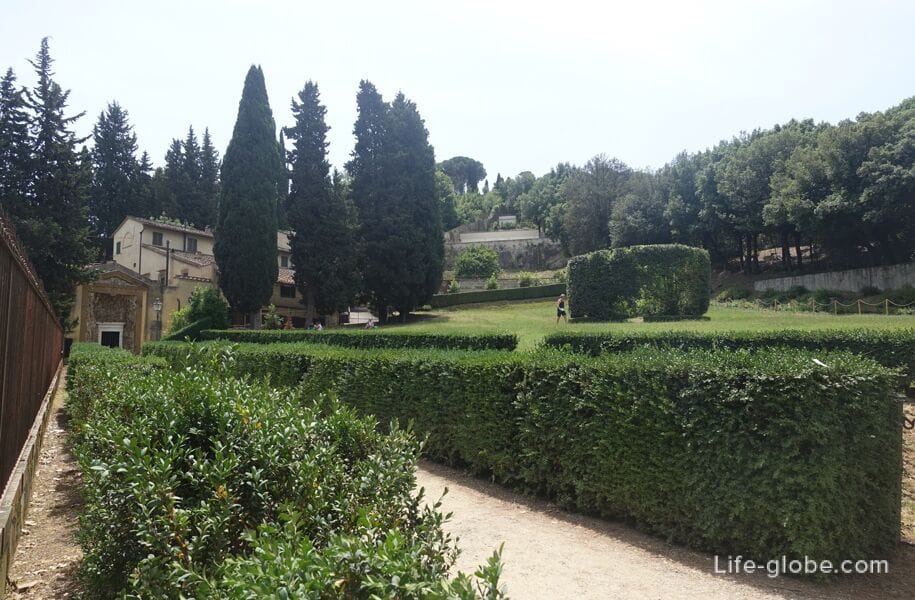

In the garden of Madama, the grotto of Madama (Grotticina della Madama), created in 1553-1555 by Davide Fortini, designed by Niccolo Tribolo, is noteworthy.
The grotto is decorated with sponges, stalactites and a marble bowl topped with four statues of goats that once poured water.
In the end, the cave was closed by a door with the coat of arms of the House of Austria referring to Mary Magdalene of Austria, the wife of Cosimo II de' Medici, who supposedly took the name Madama (hence the name of the grotto and garden).


Climbing higher along the alleys of the garden, we see the Cafeteria pavilion (Kaffeehouse) in Rococo style with an exotic dome with windows and terraces. A staircase leads to the pavilion, in which there is a small cave.
The pavilion was created between 1774 and 1785 by the Italian architect Zanobi del Rosso, commissioned by Pietro Leopoldo, who visited the pavilion to drink coffee in accordance with the fashion of the time.
The interior of the pavilion is decorated with frescoes by Giuseppe del Moro, Giuliano Traballesi and Pasquale Micheli. The central room is surrounded by four small offices decorated with Micheli; the fifth office, located on the mezzanine, is decorated with rural landscapes on a greenish monochrome background.
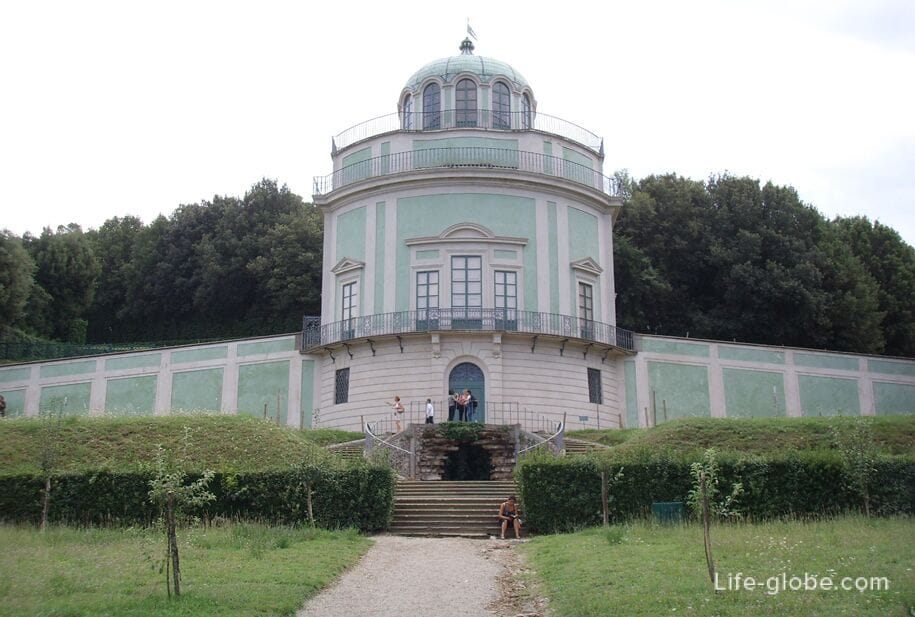
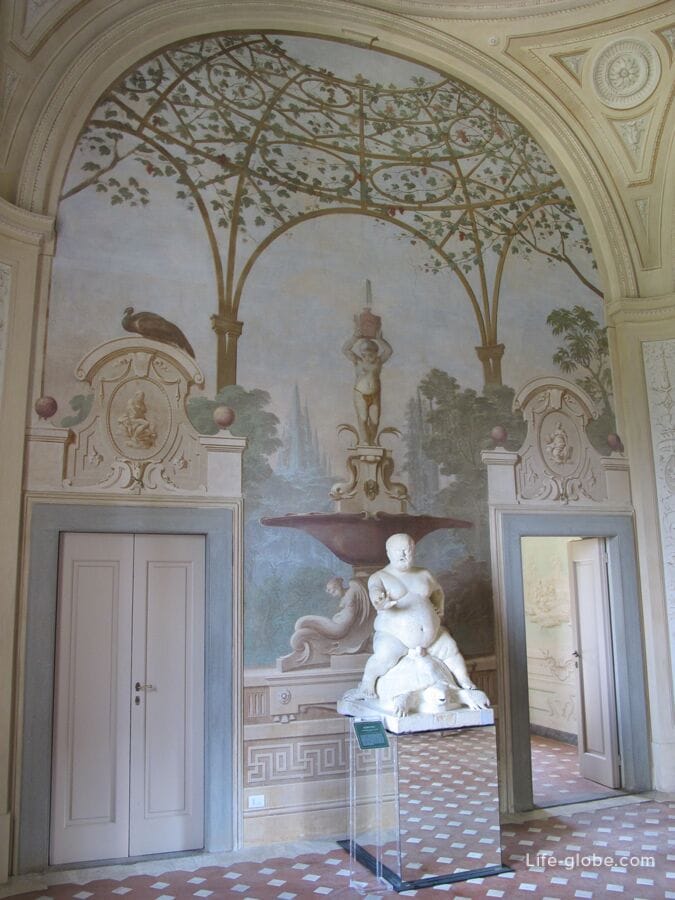
In front of the Cafeteria pavilion is a sloping lawn with a 17th-century Ganymede fountain in the center.
This lawn is called the Garden of Genimede (Giardino di Ganimede), which was created in the 1770s on the occasion of the construction of a Cafeteria.
The garden is impressive with stairs and terraces with fruit trees, as well as views of Florence in the distance.
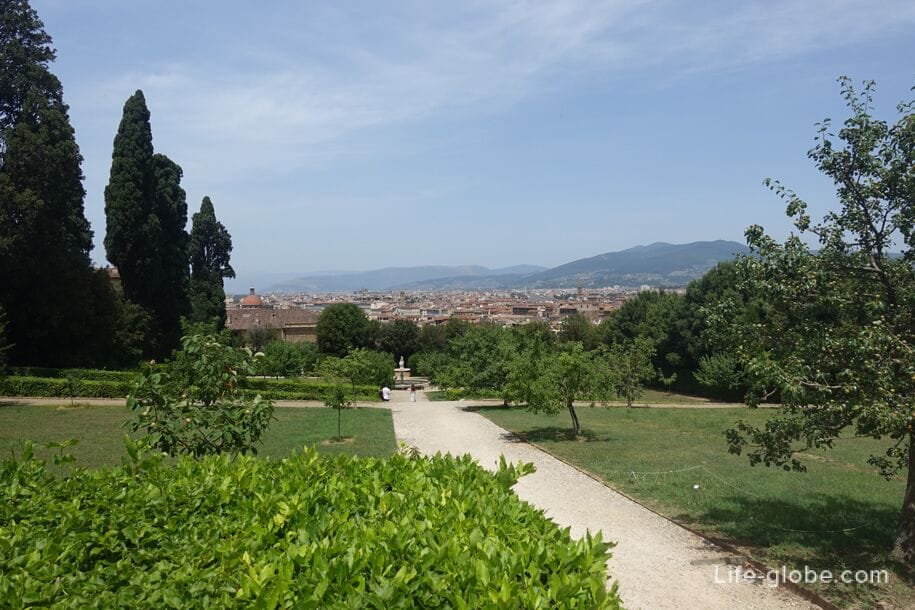
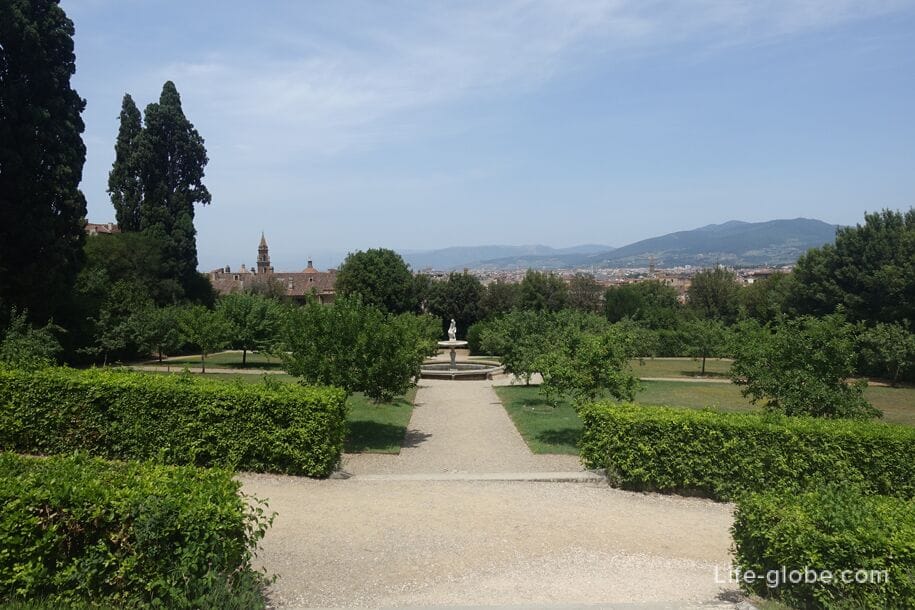
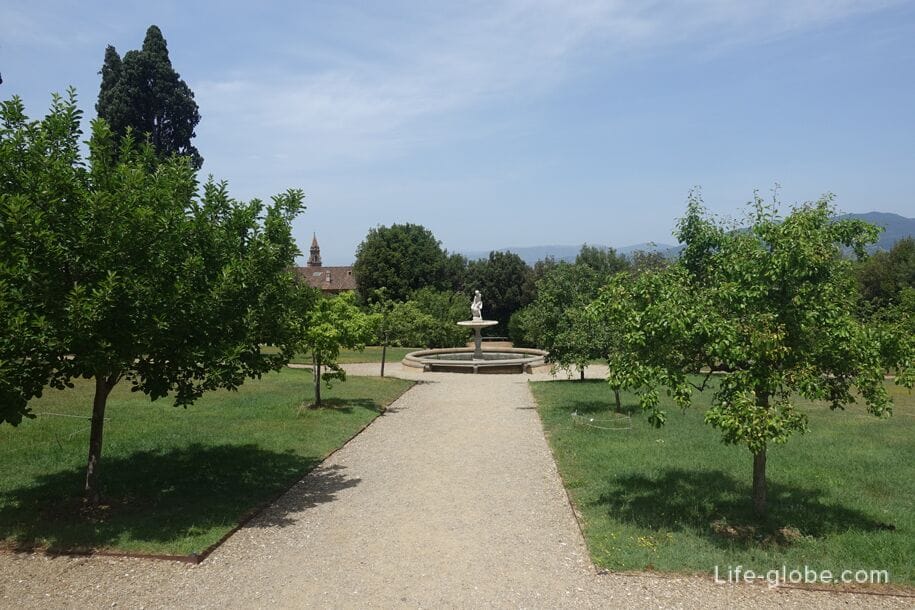
In the lower part of the Boboli Gardens, if you walk along the alley (along which horse-drawn carriages once passed) to the wing of the Pitti Palace, there are two large statues of Dacian prisoners, ancient sculptures of the second century. These sculptures of two barbarians with their hands tied and wearing red granite robes probably originate from the Forum of Trajan in Rome. The sculptures are placed on high pedestals with reliefs of Victories, Dioscuri and defeated barbarians.
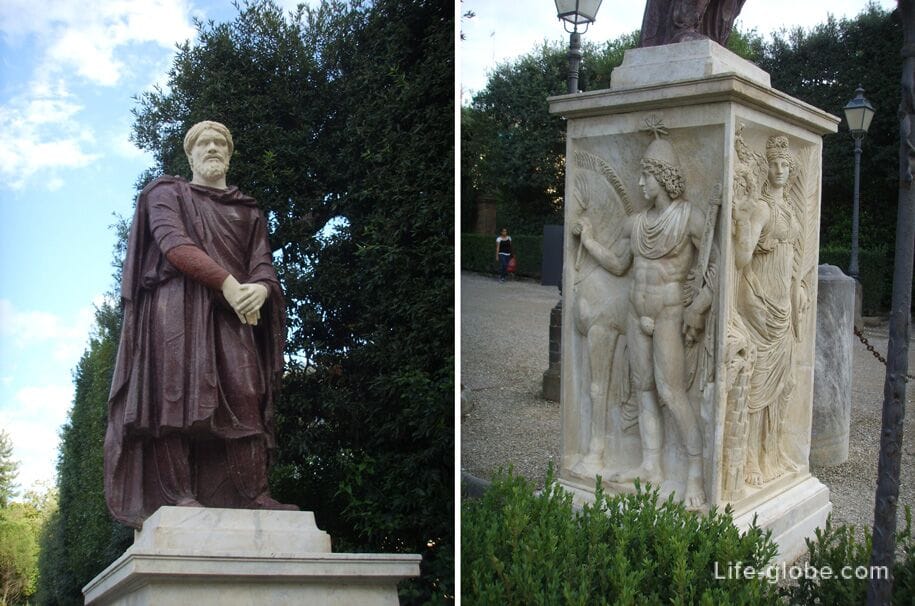
In the lowest part of this area of the Boboli Gardens (at the level of the Pitti Palace) there is an unsurpassed Large Grotto of Buontalenti (Grotta Grande, Grotta Buontalenti).
This grotto is one of the most valuable elements of the gardens. The grotto was created by Bernardo Buontalenti between 1583 and 1593 on behalf of Francesco I de' Medici.
The grotto has numerous decorations, sculptures and frescoes.
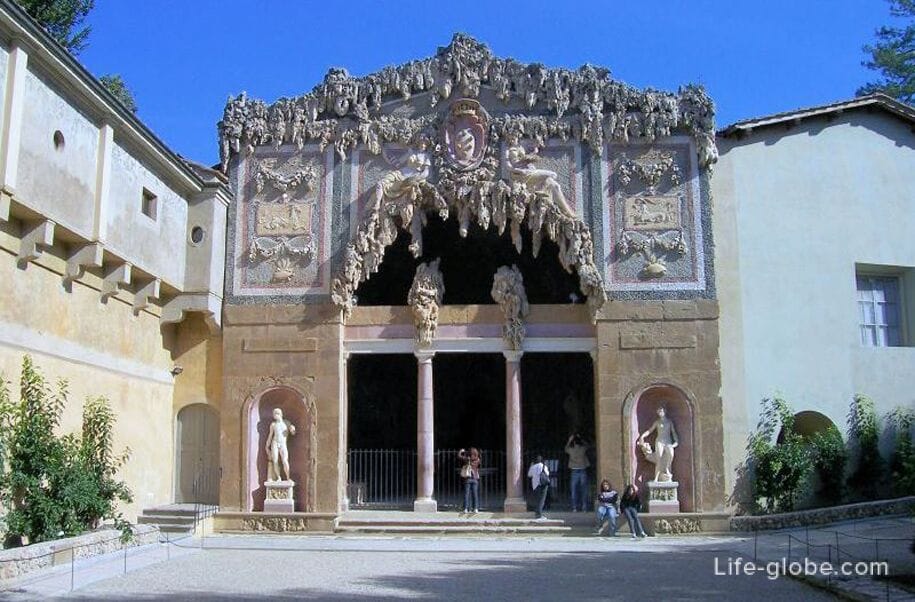


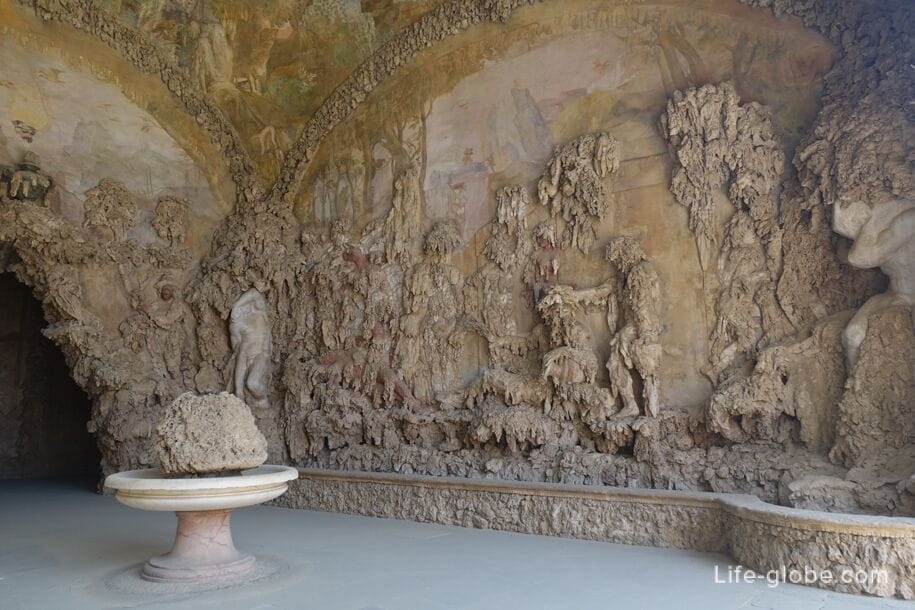

At the wing of the Petit Palace, near the gravel area where carriages with horses once stood, there is a small Fontana del Bacchino on the wall, representing an example of the grotesque taste popular in gardens between the sixteenth and seventeenth centuries.
The fountain has a sculpture of the obese dwarf Nano Morgante, the most popular of the court dwarfs of Cosimo I de' Medici, depicted naked astride a turtle in the image of a drunken Bacchus (hence the name of the fountain). A jet of water flows from the turtle's mouth, which falls into the marble pool below.
The fountain was created in 1560 by the Italian sculptor Valerio Cioli. The fountain statue has now been replaced by a replica.
The wall at which the fountain is located is the boundary wall of the palace, where the Vasari Corridor (Corridoio Vasariano) passes, which is an elevated covered gallery connecting Palazzo Vecchio with Palazzo Pitti. The corridor can be visited today.

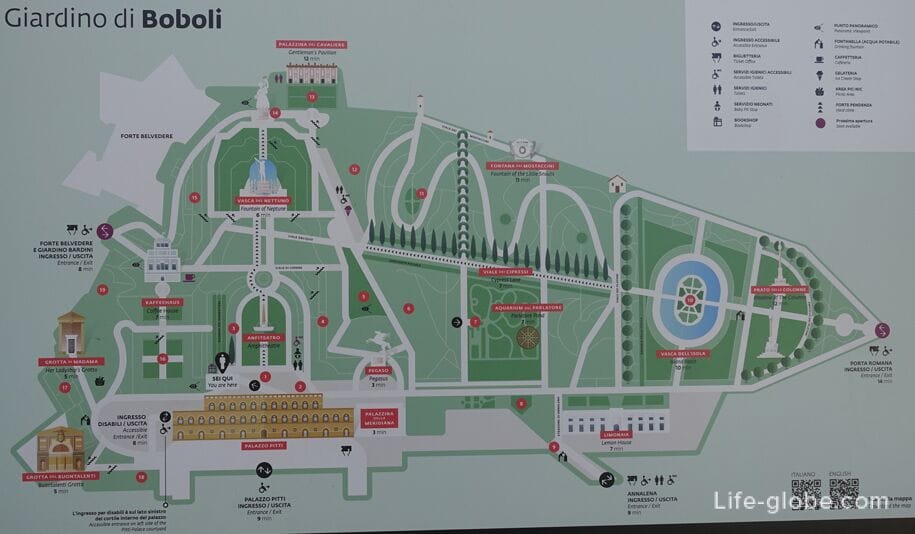

Entrance to the Boboli Gardens is paid. Children under 18 are free of charge. There are discounted tickets.
Tickets can be purchased at the ticket offices of the Gardens, Pitti Palace or online in advance.
With a ticket to the Boboli Gardens, you can visit the nearby Bardini Garden (Giardino Bardini) for free. So don't throw away the tickets.
You can also purchase a single ticket to the Boboli Gardens + Pitti Palace + Bardini Garden.
Boboli Gardens are part of the Uffizi Museum complex (Museo degli Uffizi). You can purchase a 5-day package ticket to the Uffizi Gallery, Boboli Gardens, Pitti Palace, the National Archaeological Museum and the Gem Processing Workshop Museum.
We recommend that you check all variations of tickets, as well as their cost, places of purchase, opening hours of the gardens, visiting conditions and other relevant information on the official website of the Uffizi Museum: uffizi.it/giardino-boboli.
Address of Boboli Gardens: Piazza de' Pitti, 1, 50125 Firenze FI, Italy.
Boboli Gardens coordinates: 43°45'44.5"N 11°14'53.9"E (43.762361, 11.248297).
All accommodation facilities in Florence (hotels, apartments, guest houses, etc.), including in the historical center of the city and more remotely from it, can be viewed and booked here